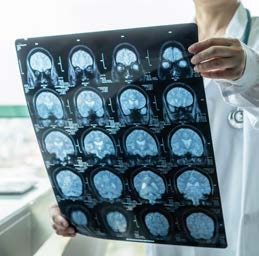Industry Facts
5 neurological phenomenons
1.) Aphantasia
Aphantasia is the inability to create mental images. People with aphantasia do not mentally visualise pictures of familiar objects, places, or people. This condition can actually impact other senses as well, and some aphantasics can experience multisensory aphantasia – meaning they cannot hear or imagine sounds either. There is still limited research into the condition, but it is believed that only roughly between 1-3% of people have aphantasia.

2.) Synaesthesia
Synaesthesia is a phenomenon in which stimulation of one sensory or cognitive pathway (such as hearing) leads to automatic, involuntary experiences in a second sensory or cognitive pathway (such as sight). Researchers are still unsure about the commonality of the condition, but it is estimated that it affects between 3-5% of the global population.
3.) Locked-in syndrome
Locked-in syndrome (LIS) is a condition in which a patient is aware but is unable to move or communicate verbally due to paralysis of almost all voluntary muscles in the body, except for vertical eye movements and blinking. In the US, this disease is estimated to afflict fewer than one thousand people.
4.) Astasia-Abasia
Astasia-abasia denotes the inability to stand due to a lack of motor coordination. The term ‘astasia’ means an inability to stand, and ‘abasia’ refers to the inability to walk properly. In this condition, individuals can exhibit unusual movements, such as swaying violently in various directions. This condition occurs in 5-15% of treated chronic pain patients. Although some patients can recover very quickly, most patients will experiene recurrence within the first one year.
5.) Anosognia
Anosognia is a phenomenon in which an individual is unaware of having a disability, due to an underlying physical or psychological disorder, which can result from physical trauma to the brain. Doctors estimate that 40% of people with bipolar disorder and 50% of those with schizophrenia have anosognia. A person with this condition can advance their quality of life through entering an intensive mental health programme, consisting of medication therapy, CBT, and coping skills training.